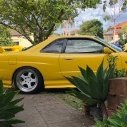Amp Setup
Announcements
-
Similar Content
-
Latest Posts
-
Neg, the top one is actually for the front. The sizes are 18x10.5 +18 and 18x11 +32. I measured many times but I'm sure I'll have problems as this is the thread for problems.
-
Just one thing; tapping tapered threads is tricky. Taps are always tapered and you would generally run it as far as you can, but with a tapered thread you have to stop much sooner otherwise the wide part of the taper will run in too far and you will have to thread the sensor in too far too as well (possible that it will never make a good seal) BTW nice wide wheels, I guess the top one is for the back!
-
Welp, good to know. Will have to wait awhile until steady hands with drills and taps are available. In other news, these just arrived! I will weigh them for posterity. Edit: 11kg each (or 10.9/11.1 depending on what my scale decides over multiple tests, the 18x11 don't seem to weigh noticeably any more than 10.5)
-
100% the factory sender is tapered, that is how it seals (well, that and teflon paste or tape)


1.thumb.png.36afd656b26d55f5d425fc76e21561f2.png)


Recommended Posts
Create an account or sign in to comment
You need to be a member in order to leave a comment
Create an account
Sign up for a new account in our community. It's easy!
Register a new accountSign in
Already have an account? Sign in here.
Sign In Now